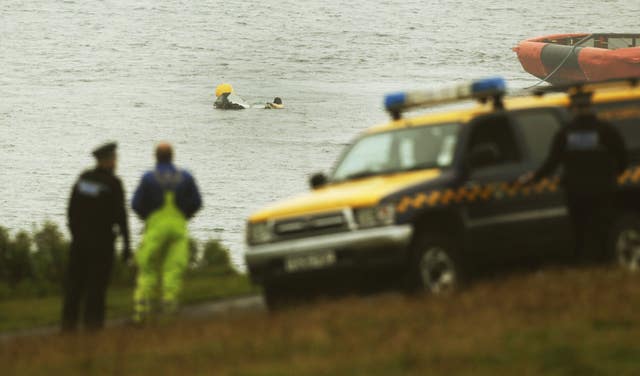A survivor of a helicopter crash in which four people were killed told a Fatal Accident Inquiry the aircraft sounded like it was “tearing itself to bits” before it hit the sea.
Neil Ritchie, 39, also said rigorous survival training he had received for working in Norway was “quite possibly” significant in helping during the ditching.
The wireline operator was one of 18 people on board the Super Puma L2 when it ditched on its approach to Sumburgh Airport, Shetland, at 18.17pm on August 23 2013.
Sarah Darnley, 45, from Elgin, Moray, Gary McCrossan, 59, from Inverness, Duncan Munro, 46, from Bishop Auckland, County Durham, and George Allison, 57, from Winchester, Hampshire, died in the crash.

The two crew members and 12 remaining passengers survived the crash, which happened as the helicopter returned from the Borgsten Dolphin support vessel.
Survivor Samuel Bull later took his own life in London in 2017, which Sheriff Principal Derek Pyle, who is hearing the inquiry, said was “directly caused” by the crash.
Giving evidence on the third day of the inquiry, being held virtually due to coronavirus measures, Mr Ritchie said he heard a loud noise and vibrations and saw from the pilot’s face that the helicopter was going down, giving him time to brace despite there being no brace warning.
“There was this vibration and it sounded like something tearing itself to bits,” he said.
“It just went over into the water and submerged instantly. You felt the impact and immediately the thing was under water.”
Mr Ritchie said he panicked before focusing on his training of counting to three, to ensure the rotor blades had stopped spinning, and trying to escape.
He said he accidentally set his life vest off while trying to access his emergency rebreather and eventually gave up on the rebreather, found an air pocket and followed someone out of a window.
He told the inquiry: “I saw the feet of somebody getting out a window and I thought that will do me, I’m going to try and see my family again.”
He said his training helped him during the accident as it gave him a set of steps to focus on and said the training for Norway was more realistic since it involved more simulated ditchings using wave machines in the dark.
The inquiry also heard from survivor Toby Croft, 38, an offshore electrician at the time, who said he was placed on the flight after complaining about not being on the passenger list, “which was a bit unlucky”.
He said there were no ditching warnings before the helicopter made a squealing sound like a car in the wrong gear.
“It fell to the side and the next thing it’s in the water,” he said.
Mr Croft said he struggled to undo his harness but managed after several attempts and escaped out of a window with help from another passenger.

Once out, he felt calmer despite spending around 50 minutes waiting for a helicopter rescue: “I’ve got a little boy and it gives you more strength than you think. I was determined. I could see land and I thought I’m going to see him again, and that’s it.”
Mr Croft said his survival training was “not particularly helpful”, being of no use in the helicopter and only limited use once he had escaped.
Professor James Grieve, who carried out post-mortem examinations on those who died in the crash, told the inquiry that Mr Munro, Mr Allison and Ms Darnley drowned.
He said Mr Munro had a severe brain inquiry caused by the impact which “almost certainly” would have been fatal in itself and likely caused him to be unable to protect his airway.
Mr Allison had a similar, less severe, injury which Prof Grieve said would not necessarily have been fatal but could have caused concussion or confusion.
Prof Grieve said Ms Darnley had no signs of brain injury and, although he could not rule out her dying instantly from such an injury before changes it made would appear, he believes her death was a “more straightforward drowning”.
He said Mr McCrossan died from heart enlargement and coronary artery disease as his heart rate spiked following the stress of the crash.
Survivor James Nugent said in a written statement that Mr McCrossan was having difficulty breathing, looked grey and clammy and was clutching his chest while working in the fortnight before the crash.
The inquiry continues.




Comments: Our rules
We want our comments to be a lively and valuable part of our community - a place where readers can debate and engage with the most important local issues. The ability to comment on our stories is a privilege, not a right, however, and that privilege may be withdrawn if it is abused or misused.
Please report any comments that break our rules.
Read the rules here